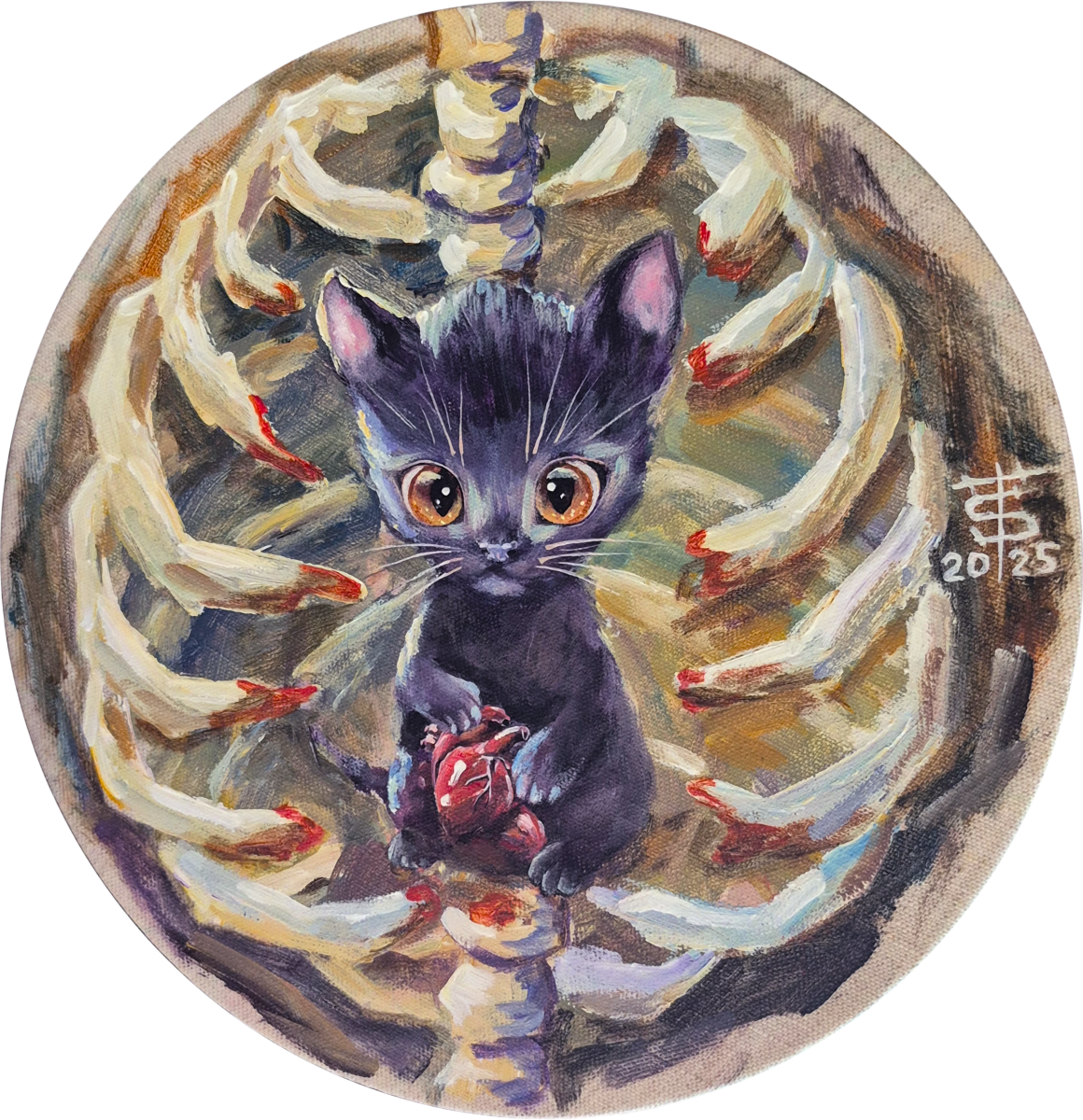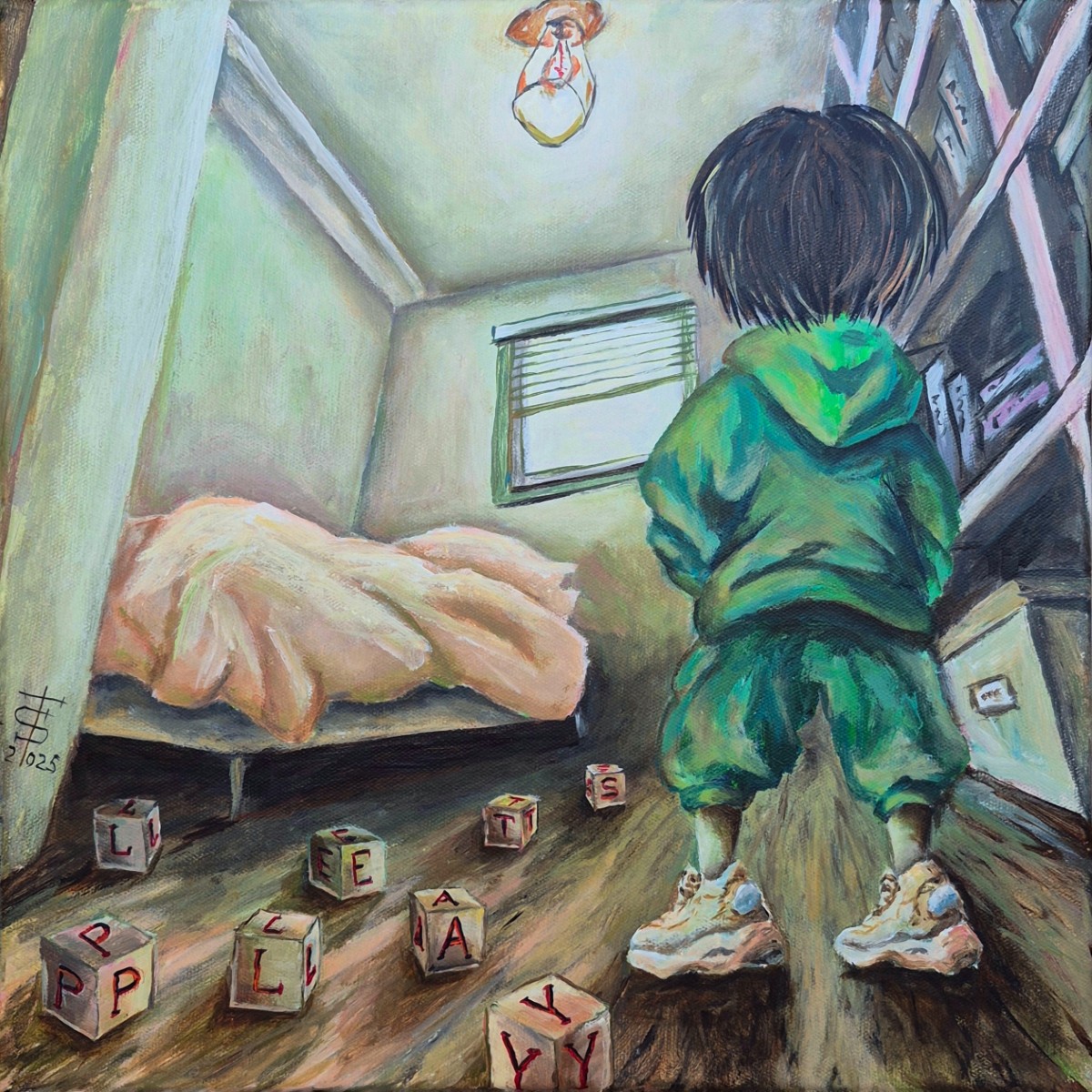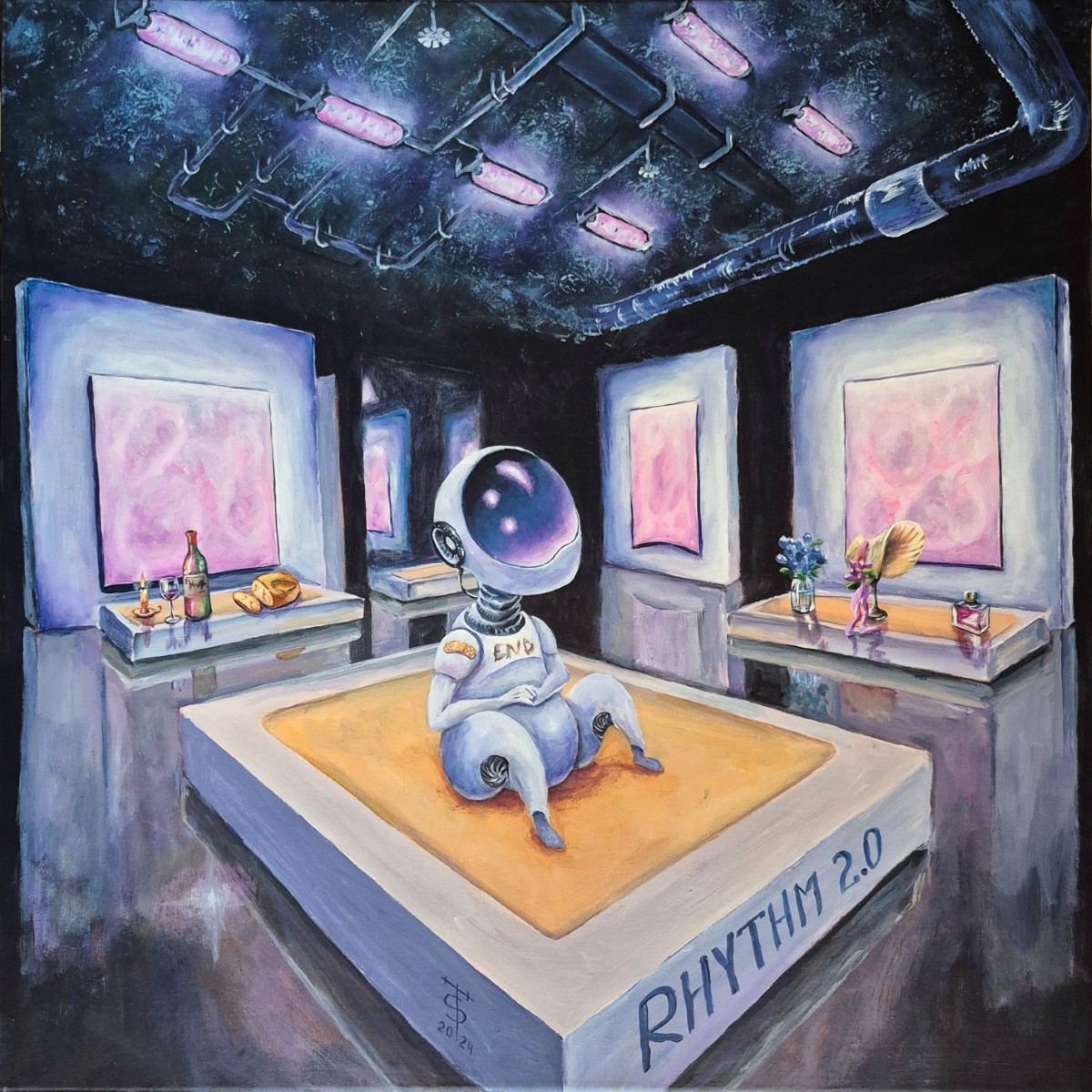Tania Stupnikova
The heart in tiny paws
Acrylic on canvas
round 30 cm
2025
Košice, Slovakia
Price: 151 EUR
They say we are all born hollow. Our chests echo like empty shells. We walk, we talk, we laugh, but inside us there is only silence. No true heart, only a space that waits.
The old stories claim that gods forgot to finish us. Others say it was punishment. But the cats know better. They walk between our bones like gardeners in a field. They carry seeds that no one can see.
When a cat chooses you, it climbs into your ribs. It curls in the hollow, its fur brushing the walls of bone. In its small paws it begins to shape something red and fragile. At first it looks like a knot of yarn, trembling and wet. Then it starts to beat.
The kitten guards it. It sleeps with one eye open, tiny claws resting on the growing heart. It feeds the heart with purrs, with warmth, with the sharp needle of its teeth. Slowly, what was once nothing becomes the center of you.
Most people never notice when it happens. They only realize later, when they cry and feel the ache, or when they love and feel the fire. They say: I have a heart now. But it was always the cat’s work.
That is why, when a cat sits on your chest and stares into your eyes, you cannot look away. It is not playing. It is measuring. It is checking if the heart it built still beats as it should.
Do not laugh. Do not push it away. You may think you own the cat. But the truth is simpler, and darker: the cat owns your heart.
And remember—many still walk among us without one.









